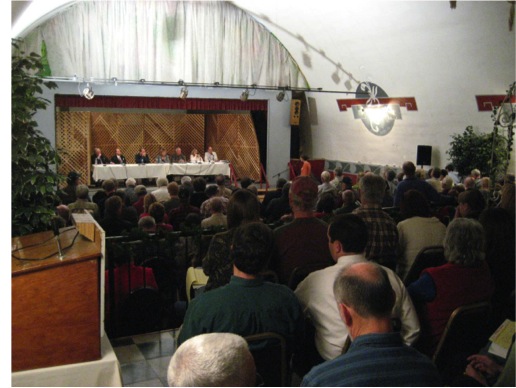 The photo at left was taken in 2006 at a key Calaveras County board session. At the meeting, the County’s planning director explained to the supervisors that CSERC’s attorneys and citizen activists were threatening litigation over deficiencies in the Calaveras County General Plan. The supervisors reluctantly agreed to start a General Plan revision process to bring the General Plan into compliance with state requirements.
The photo at left was taken in 2006 at a key Calaveras County board session. At the meeting, the County’s planning director explained to the supervisors that CSERC’s attorneys and citizen activists were threatening litigation over deficiencies in the Calaveras County General Plan. The supervisors reluctantly agreed to start a General Plan revision process to bring the General Plan into compliance with state requirements.
Now, nine years later, Calaveras County is finally taking input on a draft revised plan. CSERC staff and our legal consultants have provided detailed input on that revision, pressing the County to protect key rural values. One point CSERC has raised is that the State now estimates that Calaveras County will only grow by 9,000 residents over the next 20 years. With 25,000 vacant parcels already available for new residences in the County, there is no justification for subdividing rural parcels or agricultural lands to create more of a glut of undeveloped lots. The same issue is a concern in Tuolumne County, which also is revising its General Plan. Back in 1997, Tuolumne County adopted policies based on State growth estimates of over 97,000 residents in the County by 2020. Instead, the County has just 53,600 residents. The State recently estimated there will only be a total of 60,500 residents 45 years from now. Yet County supervisors and developers are still pressing for policies in the revised General Plan that will speed development to create even more lots.
CSERC is especially concerned about the blunt admission by County politicians that they intend to eliminate all General Plan wildlife protection policies that are not absolutely mandated by state law. Despite those policies being in place for 25 years, pro-building interests have pressed for their elimination.
Other proposed General Plan changes include opening up agricultural lands to frequent commercial events that previously were carefully restricted to minimize noise and disturbance to neighbors. Once General Plan policies are adopted, they will guide planning decisions for the next 20 years or even longer.


